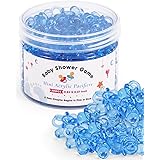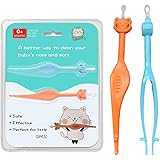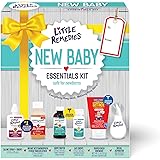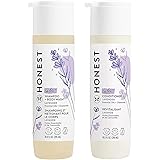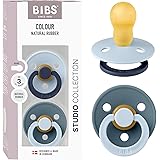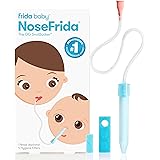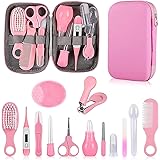Mastering Personal Hygiene for Kids: A Guide to Healthy Habits
Imagine a bustling playground filled with laughter, games, and perhaps a little bit of dirt. Or picture a fun-filled basketball game, just like the one our friend in the video above experienced! After all that excitement, sweat, and maybe a few scraped knees, what’s the first thing we should consider? The answer, of course, is personal hygiene. Developing good hygiene habits from a young age is not just about staying clean; it’s about building a strong foundation for lifelong health and well-being. This guide expands upon the essential routines highlighted in the video, providing practical tips for children and helpful insights for parents to ensure these practices become second nature.
The Power of a Daily Shower: Keeping Clean and Fresh
As the video aptly demonstrates, a refreshing shower is a cornerstone of daily personal hygiene for kids, especially after active play or sports. When we run, jump, and play, our bodies naturally produce sweat, which can mix with dirt and germs on our skin. Therefore, showering at least once a day is a highly recommended practice to wash away these elements and leave us feeling clean and invigorated.
A proper shower involves more than just getting wet. First, apply a small amount of shampoo to your palm, then rub it together to create a lather before massaging it into your hair and scalp. This effectively cleanses your hair, removing any dirt or oils. After a few seconds, rinse thoroughly until all the shampoo is gone. Subsequently, it’s time to wash your body. Dispense a small amount of shower gel onto a sponge or washcloth. Gently rub it all over your body, paying attention to areas that tend to get sweaty or dirty, such as armpits and feet. While you are lathering, it’s a smart idea to turn off the tap to conserve water – a simple step that helps protect our planet!
Once you have thoroughly scrubbed, turn the tap back on and rinse off all the soap. Ensure no suds remain on your skin, as lingering soap can cause irritation. Finally, step out of the shower and dry yourself completely with a clean, dry towel. This entire process removes germs, prevents skin issues, and leaves you feeling ready to tackle the rest of your day, or wind down for the evening.
Beyond the Shower: The Importance of Clean Clothes and Grooming
A fresh shower is only one part of the equation for good personal hygiene for kids. The video highlights another crucial step: putting on clean clothes and neatly grooming your hair. Imagine feeling wonderfully clean after your shower, only to put on the same sweaty clothes you just took off. It wouldn’t make much sense, would it? Dirty clothes can harbor bacteria and odors, counteracting all the good work you just did in the shower. Therefore, always choose fresh, clean attire for the day.
Furthermore, taking a moment to comb or brush your hair not only makes you look tidy but also helps to keep your scalp healthy. Brushing distributes natural oils and removes loose hairs and any lingering dirt. These simple acts of self-care contribute significantly to feeling confident and ready for any activity, from school to playtime.
Essential Hand Washing: A Shield Against Germs
One of the most impactful hygiene habits, as mentioned in the video, is proper hand washing. Our hands touch countless surfaces throughout the day, picking up germs and bacteria that are invisible to the naked eye. These germs can easily enter our bodies when we touch our face, mouth, or eyes, leading to illness. Consequently, thorough hand washing serves as a powerful defense against a multitude of common ailments.
While the video refers to another resource for detailed instructions, it’s vital to remember the key moments for washing hands: before eating any meal or snack, after using the restroom, after coughing or sneezing, and after playing outside or with pets. The process involves wetting your hands with clean, running water, applying soap, and rubbing your hands together for at least 20 seconds. Make sure to scrub the backs of your hands, between your fingers, and under your nails. Rinse well under running water and dry with a clean towel or air dryer. This simple yet effective routine is arguably one of the most important aspects of personal hygiene for kids.
Brushing Teeth for Healthy Smiles and Strong Gums
Maintaining a bright smile and healthy gums is an indispensable part of overall personal hygiene for kids. The video correctly emphasizes brushing your teeth after every meal. Every time we eat, tiny food particles can get trapped in our teeth. If left uncleaned, these particles can lead to plaque buildup, tooth decay, and gum disease. Therefore, consistent dental care is not merely about fresh breath; it is crucial for preventing more serious health issues.
To brush effectively, apply a pea-sized amount of fluoride toothpaste to your toothbrush. Hold the brush at a slight angle towards your gum line and use gentle, circular motions to clean the front, back, and chewing surfaces of all your teeth. Do not forget to gently brush your tongue to remove bacteria that can cause bad breath. Make sure to brush for at least two minutes each time. Regular brushing, combined with a healthy diet and routine visits to the dentist, ensures your teeth remain strong and your smile stays vibrant for years to come.
The Ritual of Face Washing: Morning and Night Refresh
Another often-overlooked yet critical hygiene habit is washing your face. The video highlights washing your face both before going to bed and upon waking up in the morning. Throughout the day, our face accumulates dirt, oil, and environmental pollutants. These can clog pores and lead to skin issues.
Washing your face before bedtime is crucial to remove the day’s accumulation, allowing your skin to breathe and rejuvenate while you sleep. Upon waking, a morning face wash helps to remove any oils or sweat produced overnight and prepares your skin for the day ahead. Utilize a gentle facial cleanser and warm water, using soft circular motions to clean your entire face. Rinse thoroughly and pat dry with a clean towel. This simple two-step daily routine significantly contributes to clearer skin and a feeling of freshness, reinforcing good personal hygiene for kids.
Nail Care: Small Details, Big Impact
Finally, the video touches upon the importance of keeping fingernails short and clean, advising against biting them. Our fingernails can be a breeding ground for germs, as dirt and bacteria can easily accumulate underneath them. When we touch our face or eat with unwashed hands, these germs can be transferred directly into our bodies.
Regularly trimming your nails with clean nail clippers or scissors, ideally once a week, helps to prevent this accumulation. Furthermore, ensuring your nails are clean is important, especially after playing outside or engaging in activities where dirt might get trapped. While biting nails might seem like a harmless habit, it directly transfers germs from under your nails into your mouth, increasing the risk of illness. Therefore, thoughtful nail care is a small yet significant aspect of comprehensive personal hygiene for kids, contributing to overall health and cleanliness.
Washing Away Your Doubts: Kids’ Hygiene Q&A
What is personal hygiene for kids?
Personal hygiene for kids means developing healthy habits like showering, washing hands, and brushing teeth. These routines help children stay clean, healthy, and prevent getting sick.
How often should kids shower?
Kids should shower at least once a day, especially after active play or sports. This helps wash away sweat, dirt, and germs, leaving them feeling clean and refreshed.
Why is hand washing important?
Hand washing is very important because our hands pick up germs from many surfaces. Washing them properly helps stop these germs from getting into our bodies and making us sick.
When should kids brush their teeth?
Kids should brush their teeth after every meal. This helps remove tiny food particles and prevents problems like plaque buildup and tooth decay, keeping smiles healthy.
Why is it important to keep fingernails short and clean?
Keeping fingernails short and clean is important because dirt and germs can hide under them. Trimming nails regularly helps prevent these germs from spreading when kids touch their face or eat.


